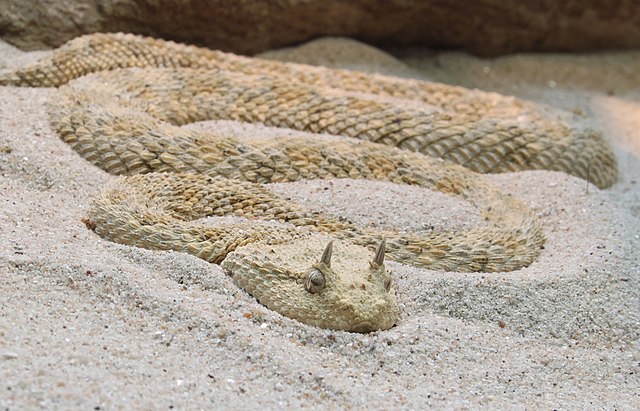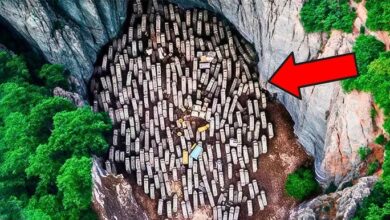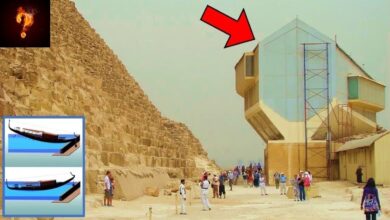If You See This Bizarre Mark in the Sand, Beware!

Imagine you are wandering in the middle of the Sahara desert, surrounded by sand. Suddenly, you spot a strange trace in the sand. The best advice? Run away from it as fast as you can! Because if you look closely, you will realize that you are facing the **Saharan horned viper** – a killer that lurks in the sand, waiting for its prey to approach.
Although the bite of this snake is rarely fatal to humans, you should still stay away. The Saharan horned viper, or *Cerastes cerastes* (scientific name), is a master of the art of camouflage, considered one of the most elusive animals in the natural world.
This snake has an average length of 30 to 60 cm, but some individuals can reach nearly 1 meter. What is special is that females are usually larger than males, which is quite rare in the snake world. However, their most prominent feature is the pair of small horns above each eye, creating a fearsome, dragon-like appearance. Not all individuals have horns – it depends on the individual’s “genetic lottery”.

Saharan horned vipers are experts at hiding. They are sand-coloured, ranging from pale yellow, grey, to pink or light brown, with dark markings on their backs that help them blend into their surroundings. They often bury themselves in the sand, leaving only their eyes and nose exposed, waiting for prey such as mice or lizards to pass by.
When threatened, horned vipers make a distinctive hissing sound by rubbing their bodies. If this warning is ignored, they will attack with a powerful venomous bite. Their venom can cause swelling, blood clotting disorders and kidney damage.
Another interesting point is the way horned vipers move. Instead of the usual crawling, they use a “sidewinding” method, which reduces contact with the hot sand and saves energy.

While Saharan horned vipers are masters of camouflage, they are not the only ones to employ this tactic. Other snakes around the world are famous for their ability to blend into their surroundings, including the Eastern Brown Snake in Australia and the Copperhead Snake in the United States.
Remember, in the wild, predators like the Saharan horned viper survive by stealth. So next time you’re out exploring, be cautious and keep an eye on your surroundings – you might be standing near a fearsome hidden “hunter”!








